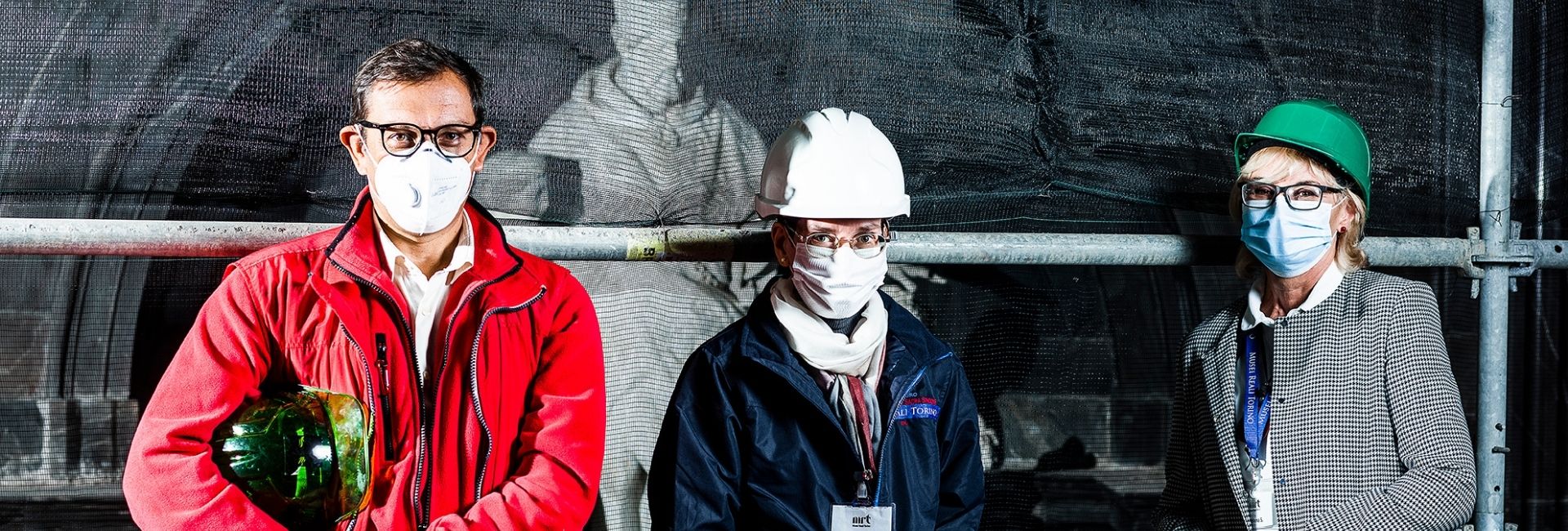The wait is over. Another 20 days and then (lockdown permitting) we will be able to see the restored altar of the Turin Shroud. The eyes of Marina Feroggio, architect of the Royal Museums and director of restoration work on the Bertola altar in the Chapel of the Shroud, peep out from the mask. An intense gaze to observe what must still be done. Few details: the two frontals on the altars, the four silver lanterns on the sides of the reliquary, the cherubs on the balustrade. These are the last steps needed to return Guarino Guarini’s masterpiece in its entirety to the public after a careful restoration made possible thanks to the funds (just over 100 thousand euros) of the Specchio dei Tempi Foundation.
At the moment the inauguration date is Tuesday 30 March, in time for Easter. Feroggio also displays a special heating mat that will prevent the public from getting cold during the visit. Only the government directives of the next few weeks (yellow, orange or red zone) will establish the effective date on which you can return to the Royal Museums, and therefore to the chapel. When it reopened in September 2018, almost twenty years after the fire, the restored architecture contrasted sharply with what was immediately renamed “The silent witness”. The altar of the Shroud in the centre of the chapel, built in 1694 by Antonio Bertola, the architect who intervened on the interior works after Guarini’s death, was blackened, mutilated and damaged before the eyes of visitors. Feroggio indicates it with her hand. It was also proposed to leave it like this, as evidence of the fire. Instead, despite Covid and the lockdowns, the San Luca Consortium in recent months has worked with a team of restorers led by Tiziana Sandri.
“In the tragedy of the fire – she explains – we must be thankful that almost all the wooden and silver furnishings were in the adjacent sacristy, saved from the flames”. We started from these surviving elements, already exhibited in an exhibition in 2010, carrying out painstaking work to reconstruct what was lost and amalgamate it with new elements and new gilding. The altar balustrade is once again dominated by the eight puttos in gilded wood, each of which holds a symbol of the passion of Jesus, made by Francesco Borello and Cesare Neurone. Around the urn, which contained the original case of the Shroud (it remained there from 1694 to 1992, except on three occasions: the Siege of Turin in 1706, the First and Second World Wars) there are statues of angels, only two, the others have been lost. The fascinating silver lanterns will be hung above the four metal shelves. The nineteenth-century ones: the originals were melted down by the Savoy in 1793 to finance the battles against Napoleon. The same fate happened to the candlesticks and to the two puttos, also in silver, at the base of the steps. Feroggio also shows the tabernacle made by Carlo Genova, known as Lacchetta, in 1791, still with the hallmarks of Vittorio Amedeo III.
The great absentee is the chiselled and embossed silver plaque of the City of Turin from 1632, set in the altar until 1992. An extraordinary work: this is the ex voto that the city officials made to the Shroud to give thanks for the end of the plague epidemic of 1630. It is not yet known whether it will be exhibited in the adjacent sacristy of the Cathedral. “The intent of the restoration was to re-propose the altar with the architectural dimension of Bertola – explains the director Enrica Pagella – without exaggerating with trappings”. In the months following the 1997 fire, the readers of La Stampa generously donated just over one billion and two hundred thousand lire at the time. The Specchio dei Tempi Foundation, in collaboration with the Amici di Palazzo Reale Association, which followed the historical-artistic part, was able to finance the restoration not only of the altar, but also that of the Savoy sepulchral monuments, in addition to the cataloguing of thousands of residual fragments of the fire, the creation of an information system to identify and relocate the fragments.



